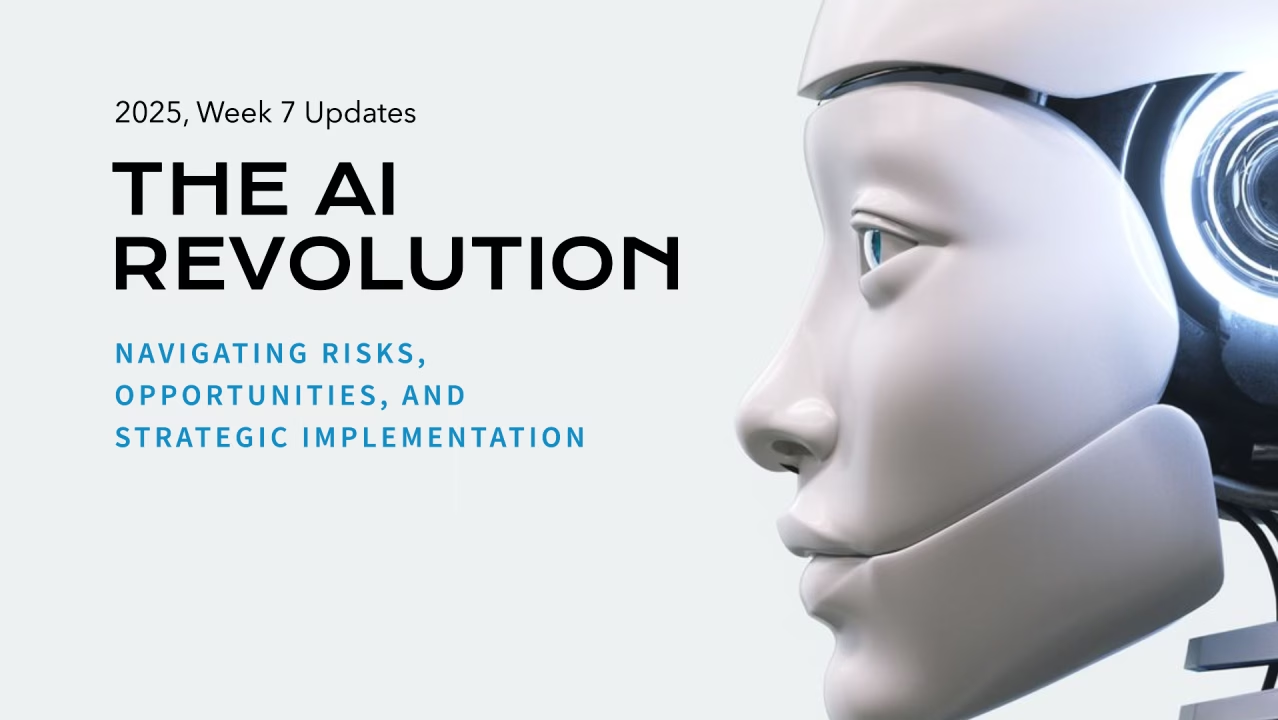Artificial intelligence (AI) is changing how businesses operate. It brings new efficiencies and capabilities, but also some risks. Staying aware and adaptable is key for leaders in this evolving landscape.
Let’s explore how AI is shaping the corporate world and what leaders can do to harness its potential responsibly.
Introduction: The AI Revolution in Business
AI technology is transforming industries worldwide, influencing how companies innovate and compete. While it offers remarkable opportunities for growth and improvement, it also presents uncertainties that require careful navigation. Today, we’ll delve into various aspects of AI in the corporate sphere, providing practical insights for leaders aiming to leverage AI effectively.
1. Understanding AI Buzzwords: Why Clarity is Crucial
The Problem with Overuse
Across industries, AI terms are frequently misunderstood. Words like digital transformation and machine learning are often used without clarity. This leads to confusion about what AI truly involves.
The Business Risk
When decision-makers lack a clear understanding of AI, they risk:
- Investing in ineffective solutions
- Misaligning AI strategies
- Facing pushback due to unrealistic expectations
How Leaders Can Respond
- Demand Specificity: Ask vendors: What specific problems will this solve? How does it align with our objectives?
- Educate Your Workforce: Conduct workshops to clarify AI concepts and their true potential.
- Set Realistic AI KPIs: Define measurable goals that go beyond buzzwords.
2. AI-Driven Cybersecurity Threats: The Next Battlefield
The Emerging Threat Landscape
AI isn’t just a defensive tool anymore. Cybercriminals are now using AI for more sophisticated attacks, including:
- Faster, more precise cyberattacks
- Deepfake technology posing security risks
- Exposing data through unsecured implementations
Case Study: AI-Enhanced Phishing Attacks
AI-generated deepfakes are being used in phishing schemes. For instance, cybercriminals mimic executives to authorize fraudulent actions, leading to significant financial harm.
Defensive Strategies
- Invest in AI-Powered Cyber Defense: Use tools that detect anomalies in real time.
- Strengthen Employee Training: Include exercises to identify phishing and deepfakes.
- Develop Rapid Response Protocols: Equip your team with AI tools for real-time threat mitigation.
3. The Open-Source AI Disruption: A Double-Edged Sword
Open-Source AI as a Cost-Effective Alternative
More organizations are turning to open-source AI solutions as affordable options compared to proprietary models.
Risks of Open-Source AI Adoption
- Security Vulnerabilities: Open-source lacks enterprise-grade security.
- Compliance Challenges: Ensure adherence to data protection laws.
- Resource Intensity: Requires specialized skills and computing power.
Best Practices for Executives
- Assess Total Cost of Ownership (TCO): Consider all costs before transitioning to open-source.
- Implement Robust Security Measures: Perform audits before implementation.
- Invest in AI Governance: Establish policies for ethical use and compliance.
4. AI in Business Process Automation: Where the Real ROI Lies
Key Areas of AI Impact
AI is enhancing operations through:
- Process Automation: Streamlining workflows
- Customer Service Optimization: Using AI for improved response and personalization
- Predictive Analytics: Enhancing demand forecasting
Real-World Applications
- Goldman Sachs: Uses AI for risk analysis and fraud detection
- Amazon: Deploys AI for warehouse automation
- Tesla: Utilizes AI for autonomous driving
- Microsoft: Offers AI solutions for workplace productivity
Practical Implementation for Operations
- Create Agile AI Teams: Focus on operational inefficiencies and AI solutions.
- Deploy Executive AI Assistants: Use AI for routine tasks.
- Use AI for Competitive Intelligence: Analyze competitor weaknesses and market opportunities.
- Implement Secure AI Inference Endpoints: Ensure safe access to AI for strategic decisions.
- Human in the Loop Oversight: Essential during initial phases.
- Internal AI Observability: Monitor AI operations continuously.
5. Future AI Trends and Strategic Considerations
Emerging Trends to Watch
- AI-Powered Decision-Making: Supporting corporate decisions with analytics
- AI Regulation and Compliance: Navigating tightening regulations
- Human-AI Collaboration: Augmenting human work, not replacing it
What Leaders Should Do Now
- Audit Your AI Readiness: Identify current capabilities and gaps
- Develop an AI Ethics Framework: Align AI use with corporate values
- Encourage Collaboration: Integrate AI strategies across departments
Conclusion: A Call to Proactive Leadership
AI is reshaping the business landscape, offering both transformative opportunities and significant risks. Leaders who are proactive, strategic, and informed will drive sustainable success. By understanding AI’s potential and limitations, they can harness this technology to achieve their organizational goals.
In a world where AI is central to business strategy, informed leadership is more critical than ever. Embrace AI responsibly and lead your organization toward a future of innovation and growth.
By following these principles, business leaders can not only keep pace with AI advancements but also position their organizations for long-term success.
